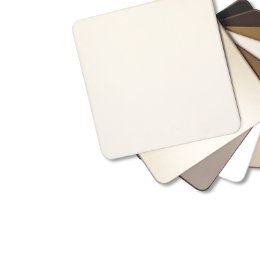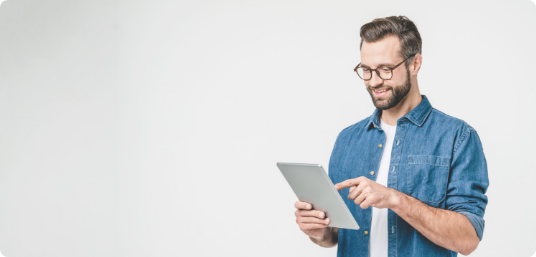What is MCM?

Explore the contemporary buildings in practically any city, and you’re bound to see many examples of a transformational architectural material — although you might not realize it. Metal composite materials (MCM) have reshaped the skyline, enabling architects to realize visions that were impractical or wholly impossible less than 50 years ago.
A little history
MCM (originally known as aluminum composite material or ACM) was introduced in 1969. As one of the first and most innovative manufacturers of MCM, ALPOLIC® materials began production in Japan in the early 1970s. By the early 1980s, ALPOLIC® MCM was also available in Germany and the U.S. From then on, adoption grew exponentially as architects, fabricators and building owners discovered the functional advantages and beautiful possibilities of this remarkable new material. In 1991, the ALPOLIC® materials facility in Chesapeake, Virginia began production, setting a standard for innovation and quality that continues to advance today with the introduction of new products and finishes.
How it’s made
MCM is manufactured by bonding thin aluminum skins to both sides of a lightweight thermoplastic core. In the case of ALPOLIC® materials, this core material can be either polyethylene (ALPOLIC®/PE) or a proprietary mineral-filled, fire-resistant material (ALPOLIC®/fr). In both cases, the standard product features aluminum skins 0.02" (0.5mm) thick. Heavy-duty 0.32" (0.8mm) skins are also available. The finished product is available in thicknesses of 3mm, 4mm or 6mm, with 4mm being the most commonly used. Standard panel dimensions are 50" or 62" wide and 146" or 196" long, with custom sizes also available.
To protect and beautify the aluminum skin, MCM is finished with a primer system on both sides and a color coat on the outward-facing side. Some finishes also have an additional clear coat to enhance and preserve a special effect, such as a metallic or prismatic look. Another option is to brush, polish or anodize the aluminum surface itself to protect the resulting effect with a clear coat.
Instead of aluminum skins, a variety of other metals can also be used including copper, stainless steel, zinc and titanium. When installed on a building, these corrosion-resistant skins are visually indistinguishable from solid sheets of the same metals. Copper and zinc develop a natural patina over time, while stainless steel and titanium maintain their initial appearance indefinitely.
Virtually any finish you can imagine
ALPOLIC® MCM is coil-coated, using an advanced die coat process. Most finishes incorporate the incredibly durable and shade-stable Lumiflon® FEVE fluoropolymer resin in a Valflon® coating supplied by Sherwin-Williams. These finishes provide a range of colors and glosses unmatched by any other architectural coating. For more muted colors, such as our Matte Series, we use a Fluropon® PVDF finish, also supplied by Sherwin-Williams.
The range of possible finishes is spectacular: solids, micas, metallics, prismatics, decorative metals, shimmer effects, stone, timber and more. It’s even possible to provide a multi-color finish on a single panel. If a standard finish doesn’t quite capture the architect’s intent, we can custom-match virtually any color imaginable. And we have a corporate ID program that offers the exact colors you expect to see in the buildings that represent scores of familiar brands worldwide.
ALPOLIC® finishes incorporate an amazing wipe-on/wipe-off graffiti removal system, are easy to clean without the need for harsh chemicals, and are warranted not to fade, crack or peel for 30 years. They’re designed to make any imaginable vision vibrantly real and to ensure that the initial look and quality endures for the life of the building. The finish possibilities of MCM have revolutionized the look of today’s most eye-catching buildings.
Endless fabrication possibilities
MCM can be used to create a practically unlimited world of complex forms and shapes. These composite materials are far more versatile and easier to fabricate than sheet metal. Cutting, grooving, punching, drilling, bending, rolling and many other fabrication techniques are easy to perform using ordinary woodworking or metalworking tools, with no special tools required.
The thermoplastic core makes MCM far lighter in weight than sheet metal, with no loss in rigidity. Composite materials are more affordable, easier to install, and they offer superior flatness, durability, stability, vibration damping and ease of maintenance. Sheet metal tends to distort, or “oil can,” due to differential expansion and contraction in changing weather conditions. MCM are immune to this effect, remaining flat and stable season after season, even in the harshest climates.
For these reasons and more, there are very few applications where it makes sense to build with sheet metal anymore. The superior fabrication capabilities of MCM enable architectural possibilities ranging from advanced rainscreens designed to withstand hurricane force-winds to incredible angled, radiused and even origami-like forms that would be prohibitively expensive or outright impossible to create using other materials.https://alpolic-americas.com/blog/creating-a-better-rainscreen-system/
A word about fire resistance
MCM provide excellent fire performance when used appropriately for a given application. ALPOLIC®/PE is rated Class A under the ASTM E84 standard, and is suitable for general-purpose use. ALPOLIC®/fr is designed for ICC 1407 compliant wall assemblies, required by the International Building Code for use on exterior walls in excess of 40 feet above grade. These wall assemblies must pass the NFPA 285 fire test. The core of ALPOLIC®/fr contributes to this required fire performance by foaming and releasing water when heated to a high temperature.
Consider the advantages
MCM provide superior flatness, stability, fabrication ease and long-term performance. They’re available in an inspiring variety of finishes and colors. They’re exceptionally strong yet light, with only one-fourth to one-third as much metal content compared to 1/8" sheet metal. They’re also more affordable and environmentally sustainable.
And they create so many new possibilities — in finish effects, in the forms that can be created, in the cladding systems that can be used, and in the visual impact and lasting quality that can be achieved. It is these new possibilities that have revolutionized the experience of modern architecture, transforming cities around the world in our lifetimes.
Why not put MCM to use transforming your own architectural vision? Request samples today.






